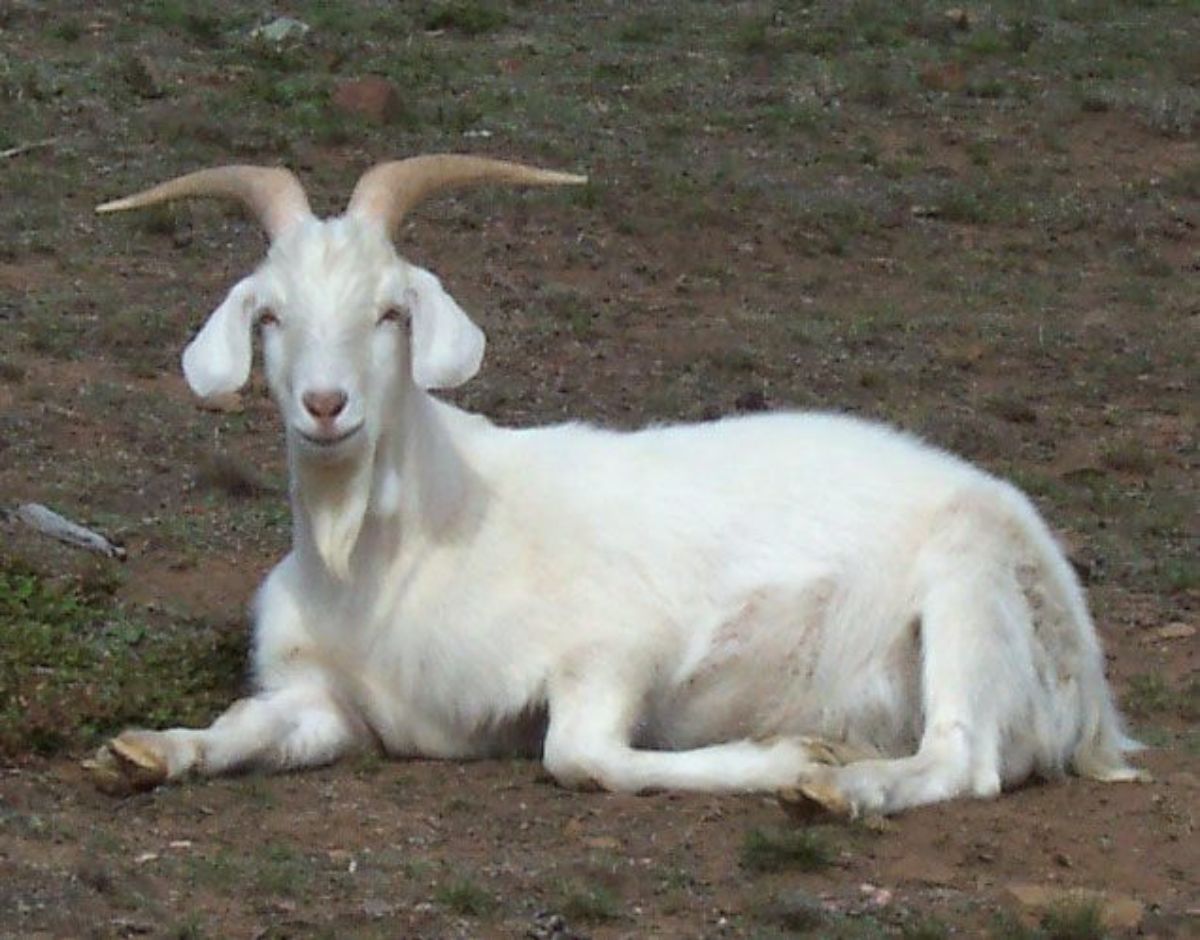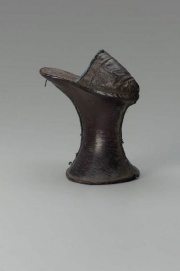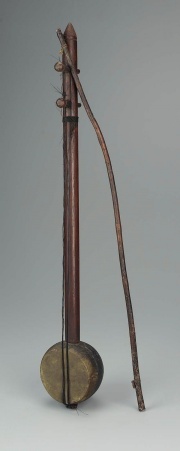Difference between revisions of "Goatskin"
| Line 1: | Line 1: | ||
| − | [[File:44.555-SC22114.jpg|thumb|]] | + | [[File:44.555-SC22114.jpg|thumb|Italian chopine<br>MFA# 44.555]] |
== Description == | == Description == | ||
Term used for both the unprocessed skin and the tanned [[leather]] made from a goat of the genus ''Capra''. From the 11th century, the Moors produced famous soft, fine leather from goatskins tanned with [[sumac]]. Moroccan goatskin leather was commonly used in book bindings from the early 16th century. Currently goatskin leather is still produced in England from hides imported from the Middle East, India and Africa. Most goatskins are [[vegetable tanned leather|vegetable tanned]] or [[chrome leather|chrome tanned]]. They are still used in bookbinding since goatskin tends to be stronger, denser and longer wearing than sheepskin. Goatskins are also used for shoe uppers, gloves, and linings. | Term used for both the unprocessed skin and the tanned [[leather]] made from a goat of the genus ''Capra''. From the 11th century, the Moors produced famous soft, fine leather from goatskins tanned with [[sumac]]. Moroccan goatskin leather was commonly used in book bindings from the early 16th century. Currently goatskin leather is still produced in England from hides imported from the Middle East, India and Africa. Most goatskins are [[vegetable tanned leather|vegetable tanned]] or [[chrome leather|chrome tanned]]. They are still used in bookbinding since goatskin tends to be stronger, denser and longer wearing than sheepskin. Goatskins are also used for shoe uppers, gloves, and linings. | ||
| − | [[File:17.2193a-b-SC24696.jpg|thumb|]] | + | [[File:17.2193a-b-SC24696.jpg|thumb|Egyptian fiddle<br>MFA# 17.2193]] |
== Synonyms and Related Terms == | == Synonyms and Related Terms == | ||
goat skin; kidskin (U.S.); piel de cabra (Esp.); cuir de chèvre (Fr.); pele de cabra (Port.); geitenhuid (Ned); casablanca (Morocco); mogador; marrakech (Spain); capeskin (South Africa); Mocha suede (Arabia); herrar (Ethipia); patna (India); madra (India); punjab (India); cordova (Brazil); pernambuco (Brazil); tampico (Mexico) | goat skin; kidskin (U.S.); piel de cabra (Esp.); cuir de chèvre (Fr.); pele de cabra (Port.); geitenhuid (Ned); casablanca (Morocco); mogador; marrakech (Spain); capeskin (South Africa); Mocha suede (Arabia); herrar (Ethipia); patna (India); madra (India); punjab (India); cordova (Brazil); pernambuco (Brazil); tampico (Mexico) | ||
| + | [[File:Malegoatwp2.jpg|thumbGoat (genus ''Capra'')]] | ||
| + | == Physical and Chemical Properties == | ||
| − | + | Has tiny pin-point holes in a row, usually in groups of three. | |
| − | + | == Resources and Citations == | |
| − | |||
| − | == | ||
| − | |||
| − | |||
| − | |||
| − | |||
| − | |||
| − | |||
| − | |||
* G.S.Brady, ''Materials Handbook'', McGraw-Hill Book Co., New York, 1971 Comment: p. 433 | * G.S.Brady, ''Materials Handbook'', McGraw-Hill Book Co., New York, 1971 Comment: p. 433 | ||
Revision as of 08:40, 17 August 2020
Description
Term used for both the unprocessed skin and the tanned Leather made from a goat of the genus Capra. From the 11th century, the Moors produced famous soft, fine leather from goatskins tanned with Sumac. Moroccan goatskin leather was commonly used in book bindings from the early 16th century. Currently goatskin leather is still produced in England from hides imported from the Middle East, India and Africa. Most goatskins are vegetable tanned or chrome tanned. They are still used in bookbinding since goatskin tends to be stronger, denser and longer wearing than sheepskin. Goatskins are also used for shoe uppers, gloves, and linings.
Synonyms and Related Terms
goat skin; kidskin (U.S.); piel de cabra (Esp.); cuir de chèvre (Fr.); pele de cabra (Port.); geitenhuid (Ned); casablanca (Morocco); mogador; marrakech (Spain); capeskin (South Africa); Mocha suede (Arabia); herrar (Ethipia); patna (India); madra (India); punjab (India); cordova (Brazil); pernambuco (Brazil); tampico (Mexico)

Physical and Chemical Properties
Has tiny pin-point holes in a row, usually in groups of three.
Resources and Citations
- G.S.Brady, Materials Handbook, McGraw-Hill Book Co., New York, 1971 Comment: p. 433
- Matt Roberts, Don Etherington, Bookbinding and the Conservation of Books: a Dictionary of Descriptive Terminology, U.S. Government Printing Office, Washington DC, 1982
- Random House, Webster's Encyclopedic Unabridged Dictionary of the English Language, Grammercy Book, New York, 1997
- Art and Architecture Thesaurus Online, http://www.getty.edu/research/tools/vocabulary/aat/, J. Paul Getty Trust, Los Angeles, 2000
- Edward Reich, Carlton J. Siegler, Consumer Goods: How to Know and Use Them, American Book Company, New York City, 1937

